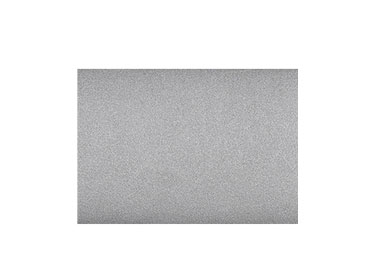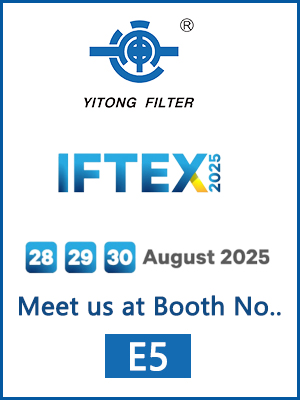Nov. 14, 2024
When it comes to filtration, separation, and fluid flow applications, few materials stand out as much as stainless steel sintered plates. Known for their superior strength, durability, and versatility, stainless steel sintered plates are used in a wide range of industries. In this article, we will explore what stainless steel sintered plates are, their manufacturing process, key benefits, and common applications. We will also highlight why they are a top choice for a variety of technical and industrial purposes.

A stainless steel sintered plate is a porous material made by sintering fine stainless steel powders together. Sintering is a heat treatment process where powder particles are heated to a point where they bond together without fully melting. This results in a highly durable, porous structure with excellent filtration properties.
The sintering process enables the creation of a material that combines the strength of stainless steel with a precise, controlled porosity. The result is a sintered plate that has specific properties, including high resistance to heat, corrosion, and wear, making it an ideal choice for industries where durability and precision are crucial.
Stainless steel sintered plates are typically produced in the form of flat sheets or discs, which can be used directly or processed further depending on the application. These plates can have varying pore sizes and thicknesses, depending on the specific requirements of the task at hand.
The production of stainless steel sintered plates begins with the selection of high-quality stainless steel powder. The powder is mixed with a binder or other materials to enhance its properties. The blend is then placed into a mold, where it is compacted into the desired shape under high pressure. This compacted powder is then subjected to high temperatures in a furnace during the sintering process.
During sintering, the powder particles heat up to a temperature that causes them to fuse together. Importantly, this process does not cause the powder to fully melt, which would result in a solid piece of material. Instead, the particles bond together at their contact points, creating a network of interconnected pores that define the sintered structure.
After sintering, the material may undergo additional processing, such as surface treatment or machining, to meet specific requirements for thickness, porosity, or other physical properties. These plates can then be cut or shaped into the final product based on customer specifications.
1. Superior Durability
Stainless steel sintered plates are highly resistant to corrosion, making them ideal for use in harsh environments where other materials might fail. Whether exposed to extreme temperatures, moisture, or aggressive chemicals, stainless steel sintered plates retain their integrity and performance. This makes them a popular choice for industries like oil and gas, water treatment, and food processing.
2. High Temperature Resistance
One of the standout properties of stainless steel sintered plates is their ability to withstand high temperatures. The sintering process gives these plates excellent thermal stability, meaning they can handle heat without deforming or losing their mechanical properties. This makes them ideal for applications in heat exchangers, filtration systems, and other high-temperature industrial processes.
3. Excellent Filtration Performance
The porosity of stainless steel sintered plates allows them to be used in a variety of filtration applications. Their precise pore structure allows for the filtration of liquids and gases with exceptional accuracy. With controlled porosity, these sintered plates can filter out particles of specific sizes, making them ideal for industrial filtration systems, air and liquid filtration, and even food and beverage processing.
4. Mechanical Strength
Despite being porous, sintered stainless steel plates retain a significant amount of mechanical strength. This makes them resistant to damage from pressure or stress, unlike traditional filters that may collapse under intense conditions. The strength of stainless steel also contributes to the longevity of these plates, reducing the need for frequent replacements.
5. Customizable Porosity and Thickness
The porosity and thickness of stainless steel sintered plates can be customized to meet the needs of specific applications. Manufacturers can adjust the powder mixture, sintering temperature, and other factors to create sintered plates with varying pore sizes, which allows for precision filtration and tailored solutions for different industries.
6. Easy to Clean and Maintain
Stainless steel is known for its ease of cleaning and maintenance. In many applications, the sintered plates can be cleaned and reused multiple times without losing efficiency. This is particularly beneficial in industries where hygiene and sanitation are critical, such as food and beverage, pharmaceuticals, and healthcare.
Stainless steel sintered plates are used across various industries due to their unique combination of properties. Here are some of the most common applications:
1. Filtration Systems
The primary use of stainless steel sintered plates is in filtration systems. These plates are often used as filter elements in gas, liquid, or solid filtration. Their precise porosity allows them to filter out contaminants while maintaining high flow rates. Industries such as chemical processing, food and beverage, and pharmaceuticals rely on these plates for efficient filtration.
2. Gas Separation
In gas separation processes, stainless steel sintered plates are often used to separate different gases or to remove particulates from gas streams. Their high temperature and pressure resistance make them an excellent choice for such applications, where the performance of the filtration system must be consistent under challenging conditions.
3. Heat Exchangers
Stainless steel sintered plates are used in heat exchangers where they can serve as a medium for heat transfer. The porous nature of the plates increases the surface area available for heat exchange, enhancing the efficiency of the system. This is particularly valuable in applications like power plants, chemical plants, and HVAC systems.
4. Catalysis and Chemical Reactions
In catalytic processes, stainless steel sintered plates are used as support structures for catalyst materials. Their high mechanical strength and resistance to corrosion make them ideal for applications where the catalyst is exposed to harsh chemicals and high temperatures.
5. Automotive and Aerospace
The automotive and aerospace industries also make use of stainless steel sintered plates for their filtration systems and exhaust systems. The plates help filter particulate matter from exhaust gases or manage the flow of fluids under high pressure and temperature conditions.
6. Water and Wastewater Treatment
Stainless steel sintered plates are commonly used in water and wastewater treatment plants. They are used to filter out suspended solids, bacteria, and other contaminants from water, ensuring that the water meets required quality standards for industrial and municipal use.
7. Food and Beverage Industry
In the food and beverage industry, stainless steel sintered plates are used in filtration processes to separate unwanted particles from liquids like oils, juices, and dairy products. The plates are easy to clean and sanitize, which is essential for maintaining hygiene and food safety.
8. Electronics and Semiconductor Manufacturing
In electronics and semiconductor manufacturing, stainless steel sintered plates are used to filter air and liquids in cleanroom environments. These plates help maintain the purity of the environment by removing particles that could contaminate delicate components.
Selecting the right stainless steel sintered plate for your application depends on several factors. Here are a few considerations to keep in mind:
- Pore Size: The pore size of the sintered plate should match the type of material being filtered. Smaller pores are better for fine filtration, while larger pores may be suited for coarser filtration.
- Thickness: The thickness of the plate can affect its strength and permeability. Thicker plates offer greater mechanical strength, while thinner plates may offer better filtration efficiency.
- Corrosion Resistance: Depending on the environment, the level of corrosion resistance needed may vary. Choose a stainless steel alloy with the appropriate resistance to the chemicals or conditions your application requires.
- Temperature and Pressure Conditions: Ensure that the sintered plate can withstand the temperature and pressure conditions of your system. Some sintered plates are designed specifically for high-pressure or high-temperature environments.
- Cleaning and Maintenance Needs: Consider the ease of cleaning and maintenance when selecting a sintered plate, especially for applications in industries like food processing or pharmaceuticals, where sanitation is critical.
Stainless steel sintered plates offer a unique combination of properties that make them invaluable across a range of industrial applications. From their excellent filtration capabilities to their durability, high-temperature resistance, and ease of maintenance, these plates are an essential component in many critical systems. Whether used in filtration, heat exchange, or chemical processing, stainless steel sintered plates provide reliable, long-lasting performance.

